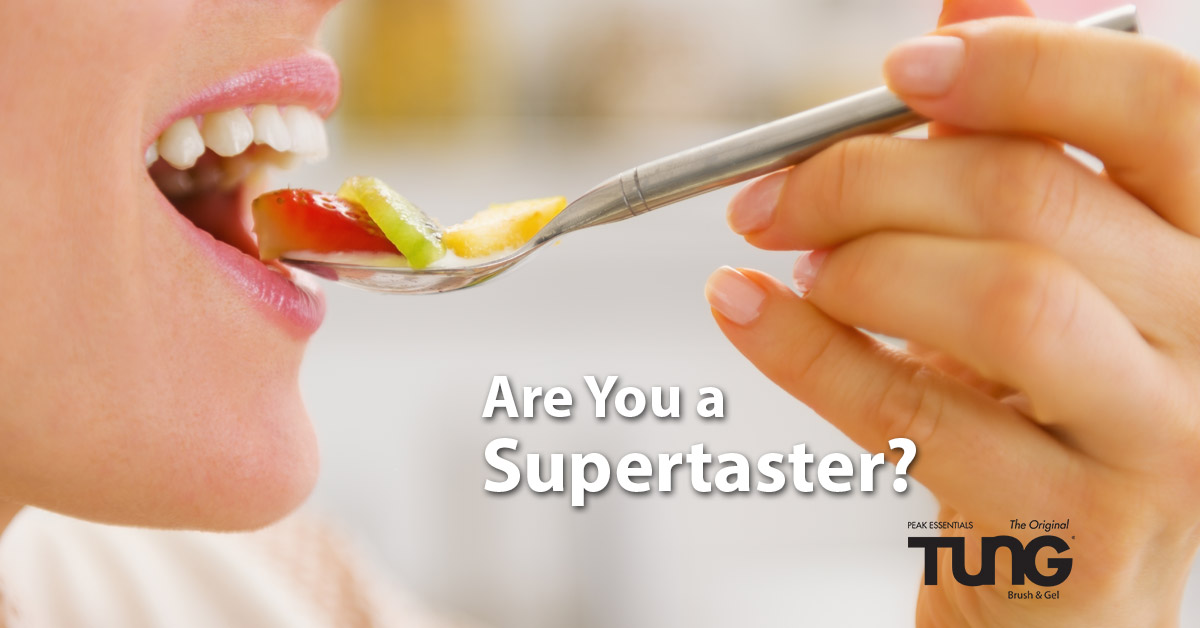Did you ever wonder why some people can handle super spicy foods and others consume gallons of water if there is any pepper on their food? (Pro tip: milk works better!)
Well, although sometimes it is a matter of sheer preference, other times it is a matter of how things taste to us based on biology. Taste compounds in food dissolve in saliva and make contact with receptor cells packed inside our taste buds. These stimulate nearby nerve cells to send signals to the back of the brain, which processes the five main taste sensations – sweet, salty, sour, bitter and umami (savory).
Some people actually experience tastes more strongly than others. So where are you in the taste spectrum? There is a test you can take to see if you are one of the 25% of the population who can be called “supertasters”.
Disclaimer – please do not take this test if you have any allergies to any food colorings!
Take the Supertaster Test
As you know, everyone has small bumps on their tongues called fungiform papillae that contain our taste buds. Supertasters have many more fungiform papillae, meaning that they react more actively to taste sensations.
But how do you find out how many papillae you have? Take the supertaster test!
Here’s what you’ll need: cotton swab(s) or cotton ball(s), blue food dye, a mirror, a pair of tweezers, reinforcement for hole-punched paper OR a small square of waxed paper (and a hole punch).
- Cover a cotton swab with blue food dye
- Stick your tongue out – come on, you can do it. Use a mirror and coat the front third of your tongue with the dye.
- Use a reinforcement for hole punched paper (if you don’t have one, use a hole punch on some waxed paper) and use your tweezers to put it onto the dyed area of your tongue.
- You will see that the blue dye has stained the tongue, but not the papillae that contain the taste buds! If you can, use a flashlight to count the papillae in the defined circle. Can’t do it? Take a tongue selfie and zoom in. Or ask a (good) friend to help you!
- More than 30 papillae = supertaster; less than 15 papillae = pretty much a non-taster, and you may need to spice everything up!
So What Does That All Mean?
- The heat of a chili pepper can seem 3 times stronger to a supertaster than a non-taster.
- Supertasters can be more sensitive to the richness of fats, and are often able to notice tiny differences in the fat content of creamy foods.
- The bubbles of carbon dioxide in fizzy drinks can seem more intense than usual to a supertaster.
- Supertasters tend to prefer saltier foods, possibly to block out other unpleasant, bitter tastes.
And remember, whether or not you are a supertaster, everything you taste will taste better if you use TUNG Brush and Gel tongue cleaner as part of your daily oral hygiene routine!



I am a Supertaster.
25-30 years ago, My Mother-in-law tested me for being one like her, a Supertaster.
She used a TEST using a common spice found in most American spice racks that did the test.
I can’t remember the spice but it did a good job with a simple touch of the spice to your tongue and if it tasted bitter, etc, one could tell without all the blue dyes, paper hole, kits to buy……………
I have tried to find it for friends but the free spice test has been replaced this items that need to be PURCHASED instead or are complicated, etc.
Anyone remember the spice test?